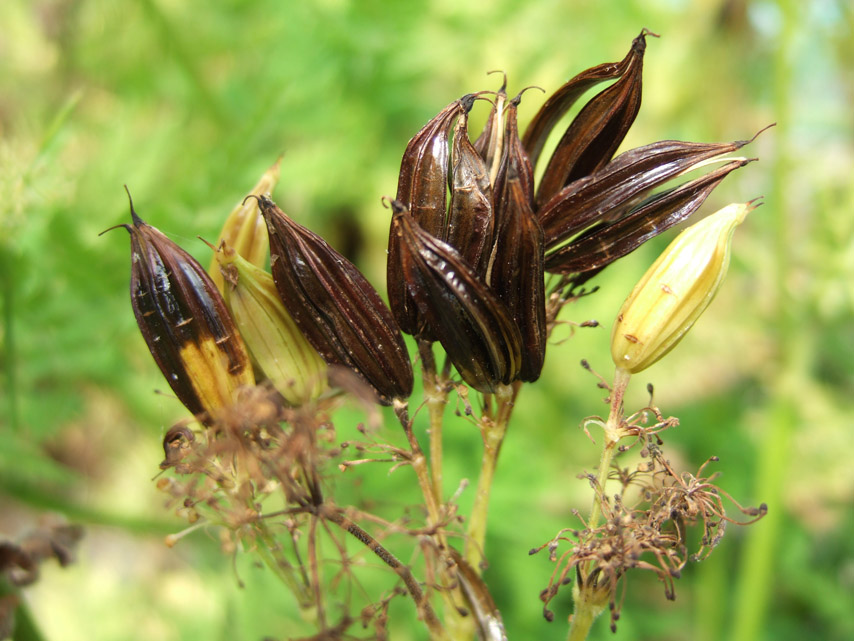| |
Myrrh Gum, Myrrh Essential Oil (Commiphora molmol)
 |
Other common names: Mo Yao, Makkul, Mukul, Myrrh Tree, Balsamodendron, Commiphora, Molmol, Mirra, Bola
Myrrh preparations are made from the gummy stem resin of this Middle Eastern plant. Traditionally, this herb has been used as a topical skin soother, and it is also used as a dietary supplement for improved throat and bronchial health, as well as a support for the natural defense system. Applied topically or as a mouthwash, Myrrh is popular for gum irritations.
History and Uses:
Myrrh Gum is a large shrub (or small tree) that is indigenous to Northeast Africa, and it is collected in southern Arabia and Iran. The part of this plant used medicinally is the resin, and Myrrh was an important trade item in ancient times. Myrrh is mentioned in the Bible, and was used as a wine preservative in the ancient world. It was also used by Egyptians in embalming mixtures and was considered an aromatic for perfumes, funerals and insect repellents. Ancient Greek and Roman physicians used the herb to treat wounds and prescribed it internally as a digestive aid and uterine stimulant to promote menstruation. It was also used as a remedy for numerous infections, including leprosy and syphilis. It is used today as an aid to repel tooth decay and gum disease. The word Myrrh is derived from a Hebrew and Arabic word, mur, meaning "bitter," and its genus name, Commiphora, is said to be derived from the Greek words, kommi, meaning "gum," and phoros, meaning "carrier." Myrrh is believed to be emotionally strengthening and empowering, and it is said to contain antiseptic, antibacterial, antiviral, antifungal and anti-inflammatory compounds. It has traditionally been used to improve ageing skin. The primary chemical constituents of Myrrh include the gum, resin and essential oil (limonene, eugenol, furanosesquiterpenes, pinene). Myrrh has been used as an effective antimicrobial agent that has been shown to work in two complementary ways. Primarily, it stimulates the production of white blood corpuscles (with their anti-pathogenic actions), and secondarily, it has a direct anti-microbial effect. It is recommended as a specific in the treatment of infections in the mouth, such as mouth ulcers, gingivitis, phyorrhea, as well as the catarrhal problems of pharyngitis and sinusitis. Myrrh may also help with laryngitis and respiratory complaints. It combines well with Echinacea for infections and similar problems and is often used as part of an approach to the treatment of the common cold. Externally, it can be healing and antiseptic for wounds and abrasions. Myrrh may also help to prevent heart disease by lowering cholesterol. The herb may also help prevent the internal blood clots that trigger heart attack. However, this herb should be avoided during pregnancy, as Myrrh can stimulate the uterus. Myrrh also stimulates mucus secretions and facilitates drainage.
The common name, Myrrh, also includes the species Commiphora abyssinica and Commiphora myrrha, which can be used interchangeably with Commiphora molmol.
Apart from its exceptional healing properties, myrrh is an excellent ingredient to use on older more mature skin, as well as very stressed, traumatized, dehydrated and dry skin and deeply chapped heels. The vulnerary action of myrrh helps in preventing tissue degeneration and is useful in the healing of wounds, as well as having a wonderful rejuvenating effect on any skin.It seems miraculous to view the results, when myrrh oil is included as one of the ingredients of a formula, as it has a nearly magical effect on very dry, draping and crepey looking skin. Myrrh starts to work in a short period of time to create a more toned, vital and healthy looking skin.Not only does myrrh help to balance the hydration of the skin, but at the same time helps to remove toxins from skin tissue, promoting general tissue repair. The way in which this volatile principle works on chronic wounds, sores and ulcers is recognized the world over and its regenerating effect takes no time to start sorting out even old wounds and ulcers. It is an extremely effective ingredient when used to sort out dry, chapped and crepey looking hands as well as sore, deeply cracked heels.
It has a warm, slightly musty smell and is pale yellow to amber in color. The main constituents of the oil are a-pinene, cadinene, limonene, cuminaldehyde, eugenol, m-cresol, heerabolene, acetic acid, formic acid and other sesquiterpenes and acids. It has antiseptic, anti-microbial, antiphlogistic, anti-inflammatory, astringent, balsamic, carminative, cicatrisant, diuretic, fungicidal, vulnerary and tonic therapeutic properties in skin care. It is a volatile principle used by even the most ancient civilizations, with the Egyptians using it in their religious and embalming ceremonies. The ancient Greek soldiers took a phial of it with them into battle, to stop bleeding wounds.
Unfortunately, due to its high cost, it is not used all that often in skin care cosmetics, yet it is one of the best ingredients to use to boost the skin and help it on the road to regeneration and rejuvenation.
The use of myrrh oil is contra-indicated in pregnancy, as it can act as a uterine stimulant.
Disclaimer: The information presented herein is intended for educational purposes only. These statements have not been evaluated by the FDA and are not intended to diagnose, cure, treat or prevent disease. Individual results may vary, and before using any supplements, it is always advisable to consult with your own health care provider.
|
|


















